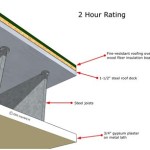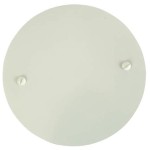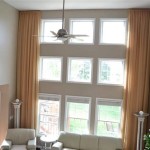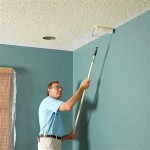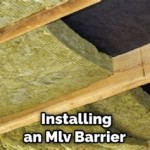Air Conditioner Vent Deflector Ceiling: Optimizing Airflow and Comfort
Maintaining a comfortable indoor environment is a crucial aspect of modern living, impacting productivity, health, and overall well-being. Air conditioning systems play a vital role in regulating temperature, especially during extreme weather conditions. However, the effectiveness of an air conditioning system can be significantly affected by the design and functionality of its vents. Air conditioner vent deflectors, particularly those designed for ceiling applications, offer a practical solution for improving airflow distribution, preventing drafts, and enhancing energy efficiency. This article explores the principles behind air conditioner vent deflectors for ceilings, their benefits, different types available, factors to consider when selecting one, and installation considerations.
Understanding Airflow Dynamics and the Need for Deflectors
Air conditioners function by cooling air and circulating it throughout a space. Without proper direction, the cooled air can be unevenly distributed, leading to hot and cold spots. This is especially noticeable in rooms with high ceilings or those with furniture arrangements that obstruct airflow. The natural tendency of cold air is to sink, meaning that air released directly downwards from a ceiling vent often concentrates near the floor, leaving the upper portion of the room warmer. This stratification effect creates an inefficient cooling process, requiring the air conditioner to work harder to achieve the desired temperature throughout the entire space.
Air conditioner vent deflectors address this issue by redirecting the airflow in a specific direction. This redirection can be used to push air horizontally across the room, creating a more even temperature distribution. By preventing air from simply falling downwards, deflectors help to mix the air more effectively, reducing temperature gradients and improving overall comfort. Furthermore, deflectors can be used to avoid drafts, which can be particularly problematic for individuals sitting directly beneath a vent. Directing the airflow away from occupants reduces the sensation of cold, uncomfortable air blowing directly onto them.
The need for vent deflectors is also heightened in commercial settings, such as offices and retail spaces, where maintaining a consistent temperature is crucial for employee comfort and customer satisfaction. In these environments, uneven temperature distribution can lead to complaints, decreased productivity, and even health issues. Properly implemented vent deflectors can help to create a more comfortable and productive work environment, leading to improved morale and efficiency.
Types of Air Conditioner Vent Deflectors for Ceilings
Several types of air conditioner vent deflectors are designed specifically for ceiling applications, each with its own advantages and disadvantages. The choice of deflector depends on the specific needs of the space, the type of vent installed, and the desired airflow pattern. Some common types include:
Adjustable Deflectors: These deflectors feature movable vanes or fins that can be adjusted to direct the airflow in different directions. This allows for a high degree of customization, enabling users to fine-tune the airflow to suit their specific needs. Adjustable deflectors are particularly useful in areas with variable occupancy or changing furniture arrangements. They are often constructed from plastic or metal and are relatively easy to install.
Fixed Deflectors: Fixed deflectors have a predetermined airflow direction and are typically used in situations where a consistent airflow pattern is desired. These deflectors are often simpler in design and construction than adjustable deflectors, making them a more cost-effective option. Fixed deflectors are suitable for areas where the furniture arrangement and occupancy patterns are relatively stable. They can be made from a variety of materials, including plastic, metal, and fabric.
Magnetic Deflectors: Magnetic deflectors attach to the vent using magnets, making them easy to install and remove. This type of deflector is particularly useful for temporary installations or in situations where the vent needs to be accessed frequently for maintenance. Magnetic deflectors are typically made from lightweight materials, such as plastic or vinyl, and are available in a variety of sizes and shapes.
Diffuser-Style Deflectors: These deflectors are designed to diffuse the airflow, spreading it out over a wider area. Diffuser-style deflectors are particularly useful in areas with high ceilings, where they can help to prevent drafts and create a more even temperature distribution. These deflectors often feature a series of concentric rings or louvers that help to break up the airflow and distribute it more evenly throughout the space.
Long Throw Deflectors: These deflectors are engineered to project air over longer distances, making them suitable for large spaces or areas where the air conditioner is located far from the occupants. Long throw deflectors typically have a streamlined design that minimizes air resistance and maximizes airflow velocity. They are often used in commercial and industrial settings, such as warehouses and factories.
Key Considerations When Selecting a Ceiling Vent Deflector
Choosing the right air conditioner vent deflector for a ceiling application requires careful consideration of several factors. Selecting the appropriate deflector ensures optimal performance and maximizes the benefits of improved airflow distribution.
Vent Size and Shape: The deflector must be compatible with the size and shape of the existing ceiling vent. Measure the dimensions of the vent carefully to ensure a proper fit. Deflectors are available in a variety of sizes and shapes to accommodate different vent configurations. Some deflectors are designed for square or rectangular vents, while others are designed for round or oval vents. Universal fit deflectors are also available, offering a greater degree of flexibility.
Material: The material of the deflector should be durable and resistant to damage from moisture and temperature fluctuations. Common materials include plastic, metal, and fabric. Plastic deflectors are typically lightweight and cost-effective, while metal deflectors are more durable and resistant to deformation. Fabric deflectors can provide a more aesthetically pleasing appearance, but may be more difficult to clean.
Adjustability: Consider whether an adjustable deflector is needed to customize the airflow direction. Adjustable deflectors offer greater flexibility and control over the airflow, but may be more expensive than fixed deflectors. If the airflow needs to be adjusted frequently, an adjustable deflector is a worthwhile investment. However, if a consistent airflow pattern is desired, a fixed deflector may be a more suitable option.
Ease of Installation: The deflector should be easy to install without requiring specialized tools or skills. Magnetic deflectors are typically the easiest to install, as they simply attach to the vent using magnets. Other types of deflectors may require screws or adhesive tape for installation. Consider the complexity of the installation process and choose a deflector that can be installed quickly and easily.
Aesthetics: The deflector should complement the décor of the room. Deflectors are available in a variety of colors and styles to match different interior designs. Consider the overall aesthetic of the room and choose a deflector that blends in seamlessly. Some deflectors are designed to be virtually invisible, while others are designed to make a statement.
Cost: The cost of the deflector should be within budget. Deflectors range in price from a few dollars to several hundred dollars, depending on the type, size, and material. Consider the benefits of improved airflow distribution and energy efficiency when evaluating the cost of a deflector. A more expensive deflector may be a worthwhile investment if it significantly improves comfort and reduces energy consumption.
Installation and Maintenance Considerations
Proper installation is crucial for ensuring that the air conditioner vent deflector functions effectively. The installation process varies depending on the type of deflector, but generally involves the following steps:
Preparation: Clean the vent surface to remove any dust or debris. This will ensure a secure and lasting attachment.
Attachment: Attach the deflector to the vent according to the manufacturer's instructions. For magnetic deflectors, simply align the deflector with the vent and allow the magnets to attach. For deflectors that require screws or adhesive tape, carefully position the deflector and secure it in place.
Adjustment: If the deflector is adjustable, adjust the vanes or fins to direct the airflow in the desired direction. Experiment with different settings to find the optimal airflow pattern for the space.
Testing: Test the airflow to ensure that it is being directed effectively. Use a piece of lightweight paper or fabric to observe the airflow pattern and make any necessary adjustments.
Regular maintenance is also important for maintaining the performance of the deflector. Clean the deflector periodically to remove any dust or debris that may accumulate. This will ensure that the airflow is not obstructed. Inspect the deflector for any signs of damage, such as cracks or broken vanes, and replace it if necessary. Following these simple maintenance tips will help to extend the lifespan of the deflector and ensure optimal performance.
In addition to these practical considerations, it’s essential to consider the impact of vent deflector placement on the overall HVAC system. Obstructing airflow entirely can lead to increased static pressure within the system, potentially damaging the blower motor or reducing the system's overall efficiency. Ensure that the deflector directs airflow without completely blocking the vent opening, allowing for sufficient air circulation.
Furthermore, consider the acoustic implications of using vent deflectors. Some deflectors, particularly those made of certain plastics, can vibrate or create whistling noises as air passes through them. This can be especially noticeable in quiet environments. Look for deflectors that are designed to minimize noise, or consider adding a sound-dampening material to the deflector itself.
Finally, remember that air conditioner vent deflectors are just one component of a comprehensive approach to improving indoor comfort and energy efficiency. Other factors, such as insulation, window treatments, and thermostat settings, also play a significant role. By addressing all of these factors, it is possible to create a comfortable and energy-efficient indoor environment.

Frost King Heat And Air Deflector Hd7 The Home

Comfort First Rectangle Plastic Air Diverters Deflector

Clear Ceiling Air Deflectors 1800ceiling

Home Intuition Hd08408 10 In To 14 Adjustable Magnetic Air Deflector For Sidewall And Ceiling Registers Vents 2 Pack

Cuticate Air Conditioner Deflector Ceiling Vent For Shops Hotel Hallway 30cmx30cm

Accord 4 11 In W X 1 28 H Air Conditioner Cover The Parts Accessories Department At Lowes Com

24 X Ceiling Dust Deflector 1800ceiling

Air Diverter Ceiling Help

6 Frosted Li Air Deflector

Elima Draft 24 In X Magnetic Mount Plastic Ceiling Air Deflector Elmdftcom3def4233 At Lowes Com
See Also

